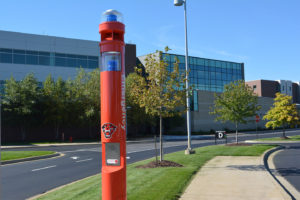 This article originally appeared in the November/December 2016 digital edition of Canadian Security Magazine.
This article originally appeared in the November/December 2016 digital edition of Canadian Security Magazine.
Download a PDF here.
BY DAVID FLEMING
A comprehensive mass notification system that pushes out multiple messages across several different platforms increases the odds of reaching a large audience and prompting an appropriate and timely reaction.
That is why the demand for advanced mass notification systems and software has grown exponentially over the past several years. One recent study projected the mass notification market to be worth more than $8.5 billion by 2020, making it obvious that more and more institutions are turning toward a layered approach to deliver emergency alerts. It is a prudent choice, since the odds of reaching an intended audience only increase with multiple means of communication, and it is an approach that is especially crucial when it involves a potentially dangerous situation.
According to a study conducted by the University of Texas at Austin titled “Using Multiple Channels and Sources to Combat Noise and Escalate a Sense of Urgency,” the most effective way to convey seriousness is to send messages through multiple channels.
“The reason why I think it has to be redundant today is that increasingly we’re being hit with so many different messages through mobile devices, through desktop computers … we have lots of different communication channels,” Dr. Keri K. Stephens said in a video supporting the study. “The challenge for organizations is when they have a real emergency, something really important to communicate to people, they need to be able to reach us.”
It is extremely important to understand all of the factors that go into mass notification communication in advance of implementing a new system. Every organization and location will have unique needs and requirements. Those issues will need to be resolved before people are put in harm’s way.
For example, desensitization can cause emergency notifications to be misinterpreted, delayed or disregarded. A Pew Research Center study showed that young people average more than 60 text messages per day. Even though they are seen as a real-time approach to communication, many have become desensitized to them as a timely platform. That is why it is critical to consider a multilayered approach that includes audio, visual and messaging applications to ensure everyone is being reached. Using only one system, particularly text or email, is not enough to ensure than an emergency notification will elicit an appropriate reaction.
There are a number of important questions that must be answered before an appropriate emergency communication plan can be implemented. These include organizational development, planning, security system implementation and the type of message to be dispersed. Here some questions you may want to consider before implementing a mass notification system:
- Who should be involved in the planning process?
- What are the audiences within your organization and the surrounding community?
- How will you ensure that messages are delivered in a timely fashion?
- What message delivery systems are currently available?
- What is the balance of your systems between audio, visual and messaging platforms?
- Will you create pre-approved messages in advance or sign off on each message before it is sent?
- How do you delineate test messages, emergency alerts and all clear notifications?
Determining the most effective means to communicate with large audiences can be a complex process. However, taking the time to proactively craft an effective emergency operations plan that includes a multilayered emergency communication system and appropriate messages, will not only cut down on response times during potentially dangerous incidents, but it will make the response of your audience more potent and powerful. And, in the end, that will help everyone remain safe.
David Fleming is the Chief Design Officer for Code Blue Corporation.
